Gardeners in coastal regions know how prolific seaweed can be. Kelp and other seaweed types can be detached from the ocean floor during storms and rough seas and wash up on the beach in dense clumps. But did you ever think about using seaweed in your garden?
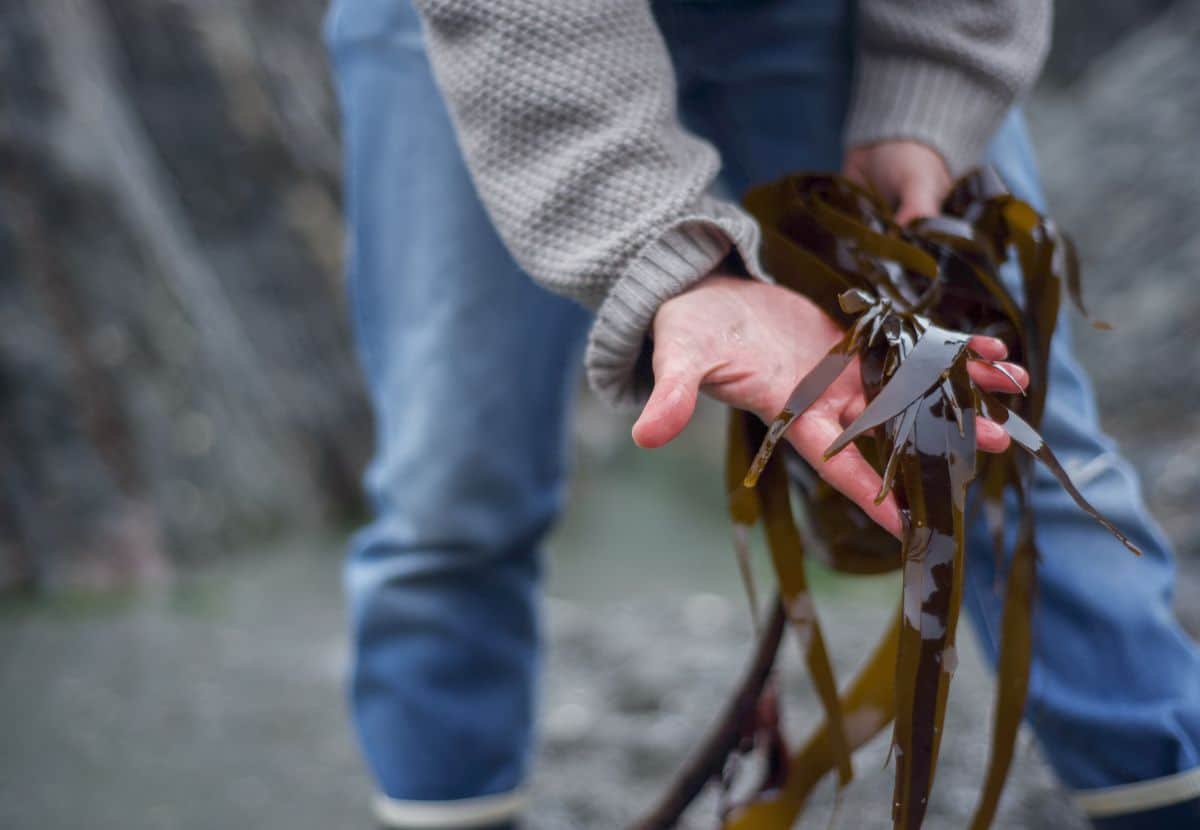
Like other natural products, seaweed can offer lots of benefits to the organic garden. Packed full of trace minerals, seaweed can be a rich source of the nutrients plants need to grow, and it makes a fine compost too. Seaweed mulch excels at weed suppression and also helps protect your soil, increases water retention, enhances soil structure, and shields soil from erosion.
But that’s not all. Seaweed can also be made into a foliar spray or soil drench and can boost plants’ natural ability to fight off pathogens and insects. Seaweed can also ward against fungal diseases and common pests like slugs and snails.
Seaweed is full of many essential nutrients, like nitrogen, phosphorous, potassium, boron, sulfur, copper, and iron; however, it is not a complete fertilizer. Instead, seaweed works best when combined with other natural products – such as compost or manure – as it contains trace minerals that other soil amendments may be lacking. And best of all, using seaweed in the garden is eco-friendly, as it reduces the need to use chemical herbicides and pesticides, and synthetic fertilizers.
Below are some of the best ways to use seaweed in your garden. We’ve also included some tips at the end of this article to help you harvest and use seaweed in the most efficient way possible. If you’re ready to start gardening with seaweed, read on!
Jump to:
- 6 Ways to use seaweed in your garden
- 1. Add seaweed to your compost pile.
- 2. Use seaweed mulch in your garden.
- 3. Make seaweed tea for your plants.
- 4. Boost seedling growth with seaweed.
- 5. Keep slugs and snails away with seaweed.
- 6. Prevent fungal diseases.
- Tips on harvesting seaweed
- Frequently asked questions
- Summary
6 Ways to use seaweed in your garden
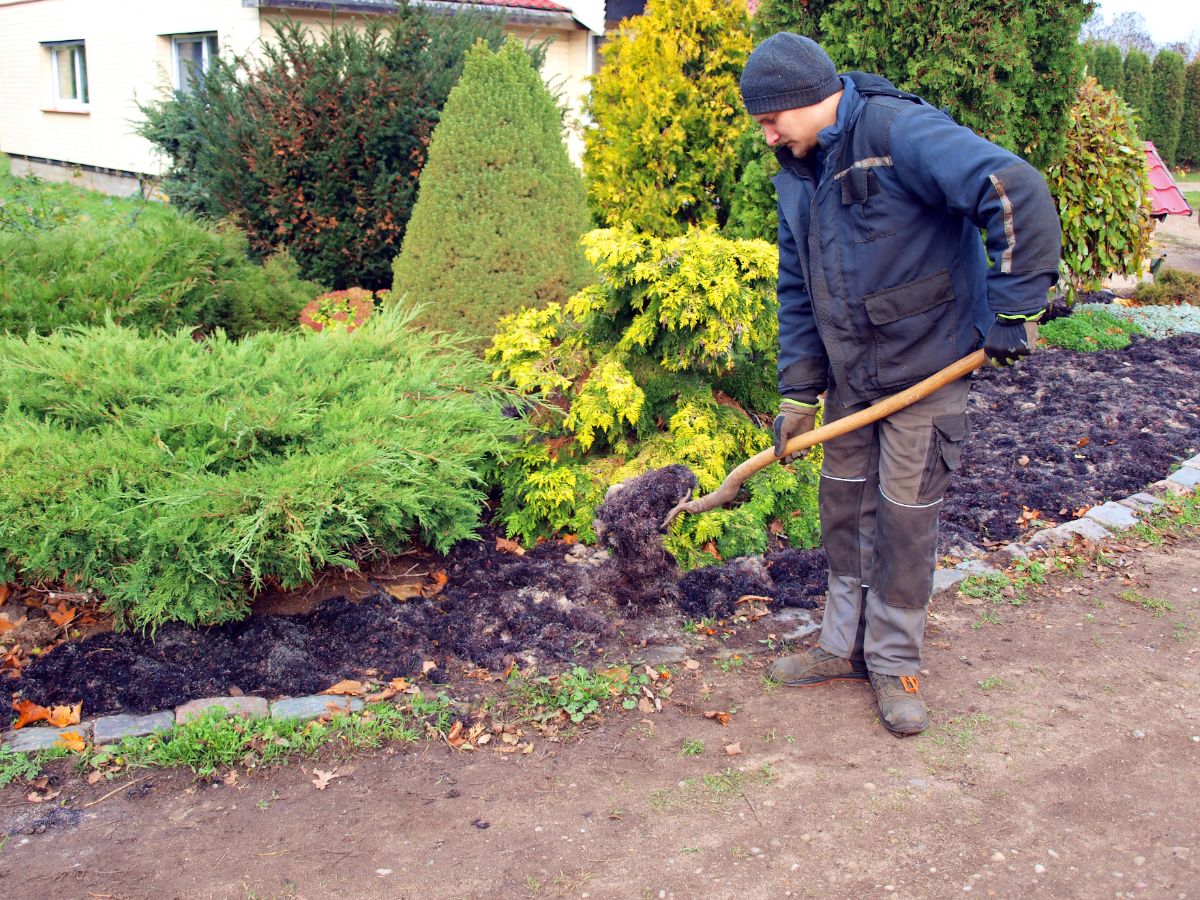
Seaweed is an incredibly versatile ingredient in the organic garden. It works as a compost, a liquid fertilizer, and a mulch… and it has other benefits! Below are our top 6 favorite reasons why we love working with seaweed, although you may find other ways to use this product in your own garden.
1. Add seaweed to your compost pile.
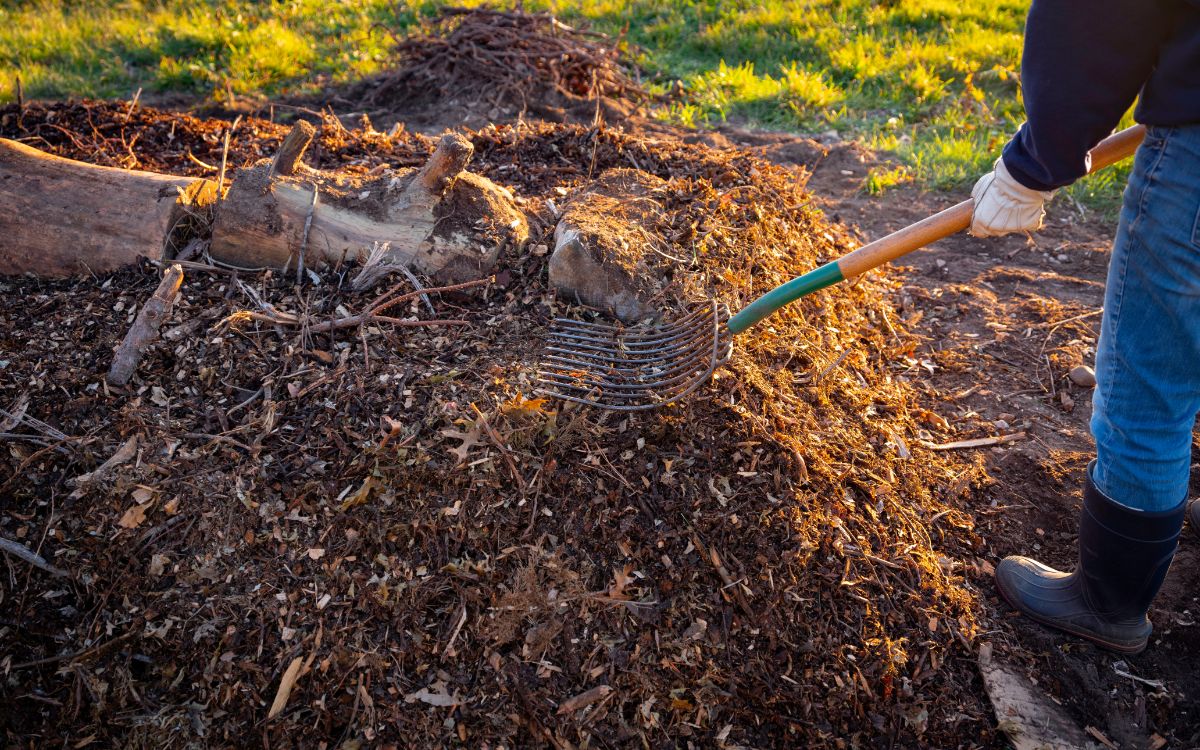
One of the quickest and easiest ways to get the most out of seaweed is to compost it. Composting your seaweed before using it will make the nutrients and minerals in the seaweed more readily available for your plants. This process will also break down seaweed strands so that they are easier to apply to your garden beds.
Seaweed can be used just like any other nitrogen-rich material in your compost pile. You can use seaweed as the primary nitrogen source in your compost, or you can mix it with other “green materials,” such as kitchen food scraps, grass clippings, coffee grounds, and loose-leaf tea. Either way, use approximately 1 part seaweed (or other nitrogen-rich materials) to 3 parts carbon-rich materials to ensure you have a properly balanced compost pile.
Depending on how fast you’d like to create your finished seaweed compost, you can compost seaweed either with hot or cold composting methods. You don’t necessarily need to stir your compost pile, but the more you aerate it, the quicker you will produce finished compost.
Good sources of carbon-rich materials to mix with your seaweed include dry autumn leaves, weed-free straw, wood chips, and shredded newspaper.
2. Use seaweed mulch in your garden.

Straw and grass clippings are often used as organic mulches in garden beds and landscape designs; however, straw can be pricey, and both products may contain pesky weed seeds. Seaweed, on the other hand, is 100% weed free and makes an effective and budget-friendly mulch that offers loads of benefits to your plants.
As seaweed mulch naturally degrades, it will release trace minerals and nutrients into your garden soil and boost plant growth and health. It is also readily available throughout the year, so you can mulch your garden with seaweed whenever you need to. Once in place, seaweed mulch is exceptional at suppressing weeds, and it also helps conserve moisture in your soil and prevents erosion.
To use seaweed as a mulch, briefly rinse off the seaweed with your garden hose and then apply 4 to 6” of fresh seaweed over your garden beds. After a day or two, the seaweed should shrink significantly. Once this happens, apply another 4 to 6” layer of fresh seaweed on top.
Although this sounds like a lot of mulch, seaweed gets more compact as it dries, and it won’t feel like much seaweed once it shrinks. You can use seaweed mulch on its own, or you can combine it with other natural mulches, like salt marsh hay, mulched autumn leaves, or weed-free straw.
One of the major perks of using seaweed as a mulch is that there is some evidence that seaweed will increase the sugar content in your plants. This can make plants better able to withstand colder temperatures in winter. And, of course, higher sugar content results in tastier produce too!
Note: As with other mulches, never apply seaweed mulch directly against plant stems or tree trunks, as this can promote rot and other issues. Instead, leave a few inches of space between your mulch line and your plant each time you spread a fresh layer of mulch.
3. Make seaweed tea for your plants.
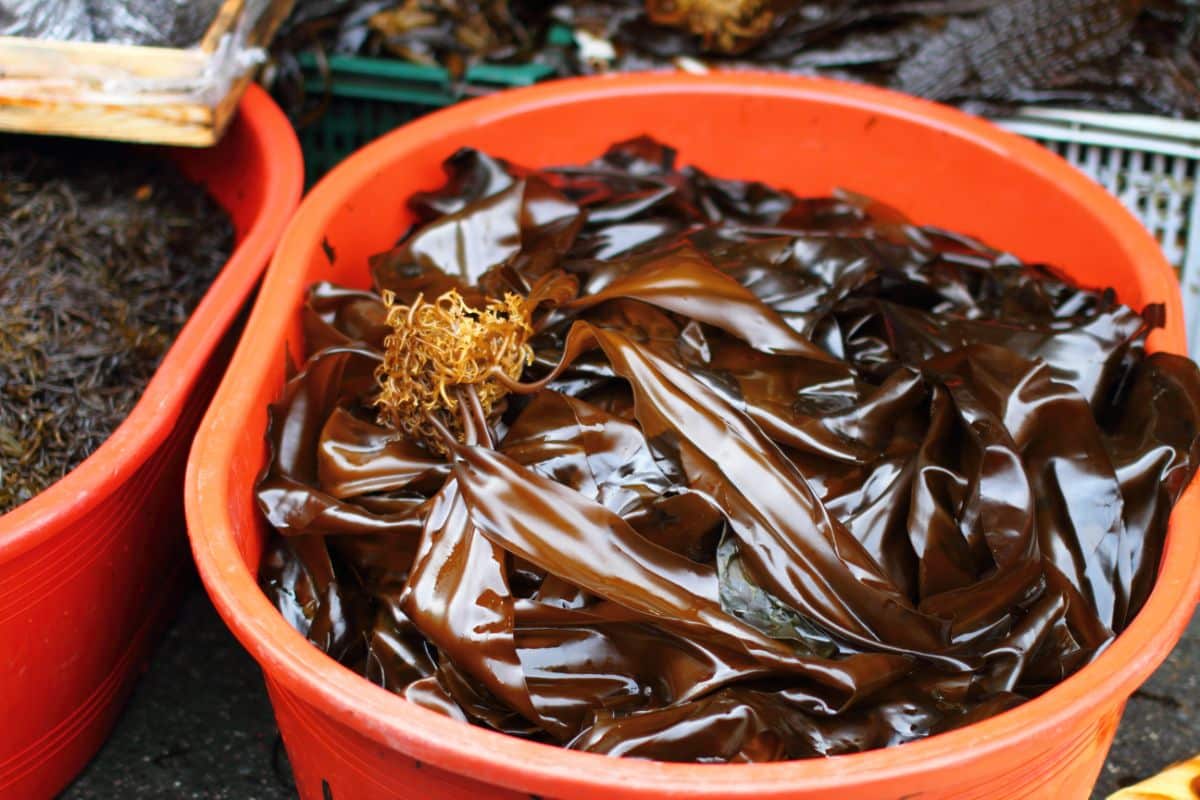
You can purchase premade liquid seaweed fertilizer at many garden centers, but it can be expensive, and it won't go very far if you have a large garden. Instead, you can easily make your own seaweed tea to use as a liquid fertilizer on both houseplants and garden plants alike.
To make your own seaweed fertilizer, gather up fresh seaweed and give it a quick rinse with your garden hose. Then place your seaweed in a bucket of water or other large vessel and cover it with a lid. Allow the seaweed to steep in the water for a couple of weeks.
After this time, pour out your liquid seaweed fertilizer into a watering can or garden sprayer and add the remaining solid seaweed debris to your compost pile. You can use your seaweed tea as both a soil drench and a foliar spray.
Note: Some gardeners choose to spray their seedlings with a foliar spray of liquid seaweed when they transplant their seeds outdoors in spring. While this isn’t required, doing so can help your seedlings transition outside more easily. It can also ward against transplant shock, fungal diseases, and other stressors.
4. Boost seedling growth with seaweed.
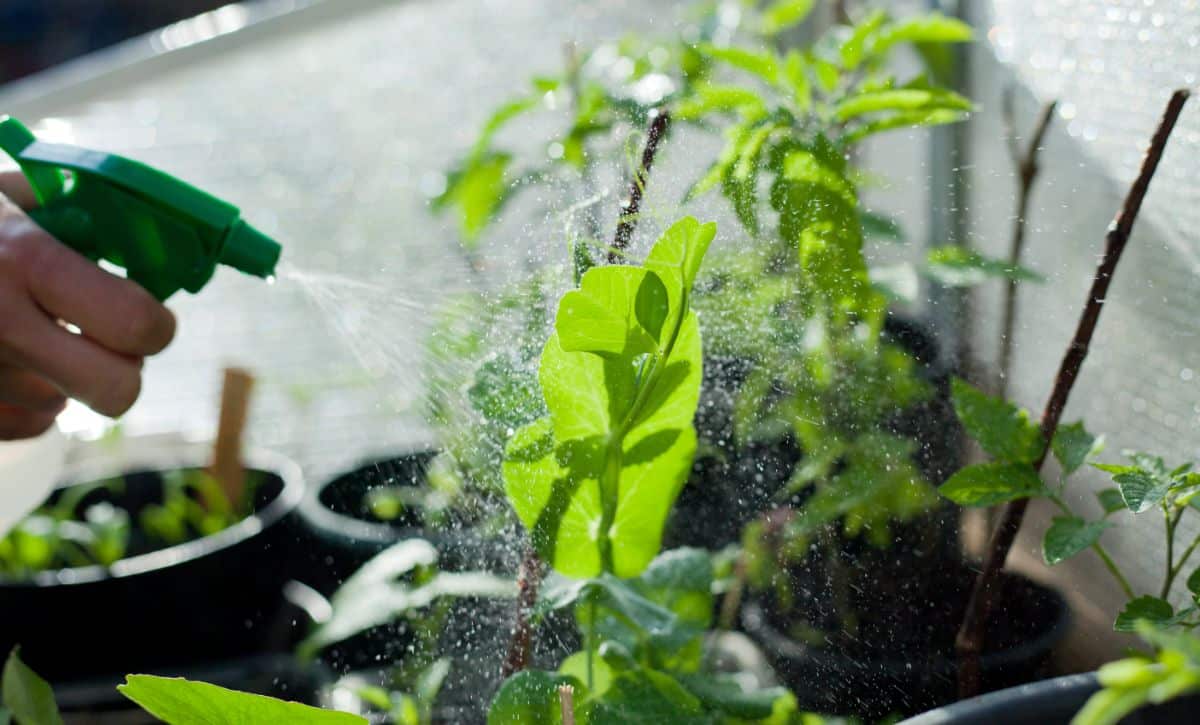
Seaweed tea can help plants in your garden grow larger and reduce pest activity. But you can also use seaweed tea on seeds and seedlings that you start indoors. Doing so will help you to grow healthier plants, increase germination rates and give you a leg up on the growing season ahead.
After sowing your seeds in seed trays or pots indoors, try spritzing the top of the soil line with a bit of seaweed tea. Doing so will give your seedlings a nutrient boost and help them to germinate faster and grow more vigorously.
Seaweed has also been shown to have anti-fungal properties. When applied to seeds and young seedlings, seaweed tea may help prevent damping off – a devasting disease that targets young seedlings.
5. Keep slugs and snails away with seaweed.
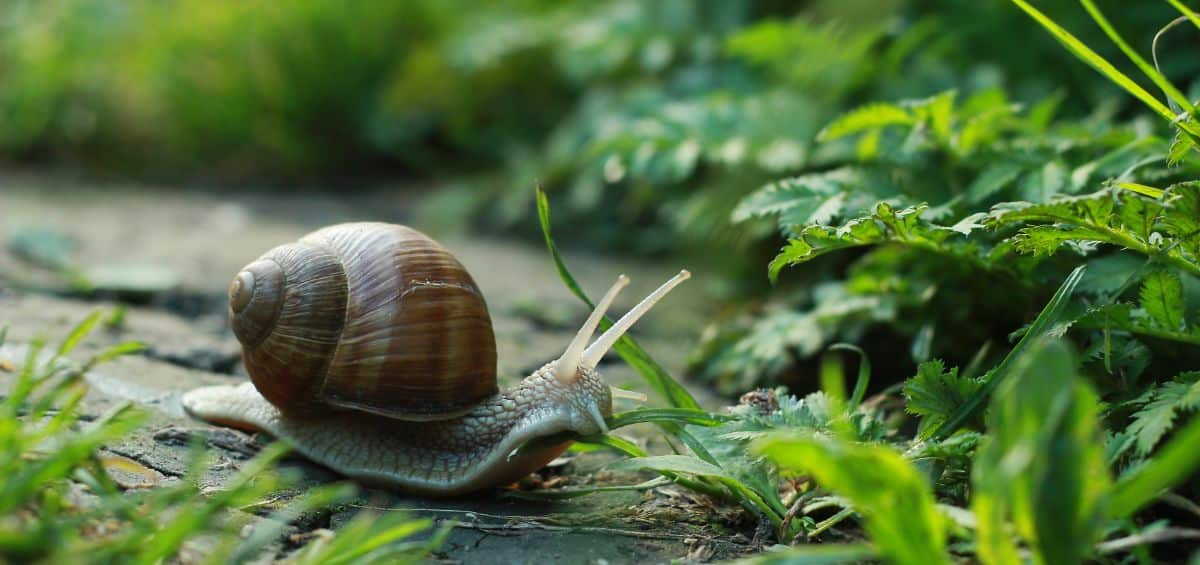
Every gardener knows that slugs and snails don’t like salt. You can use this to your advantage by employing seaweed in your garden as part of your organic pest control strategy.
All seaweed contains some salt. While the quantity of salt isn't high enough to damage your plants, it can naturally repel snails and slugs that don’t want to crawl across salty seaweed.
If you have plants that attract slugs, like hostas or cruciferous vegetables, try encircling them with a bit of seaweed or add some seaweed mulch to your beds. Your plants will be slug-free, and you’ll be able to harvest pest-free produce!
6. Prevent fungal diseases.
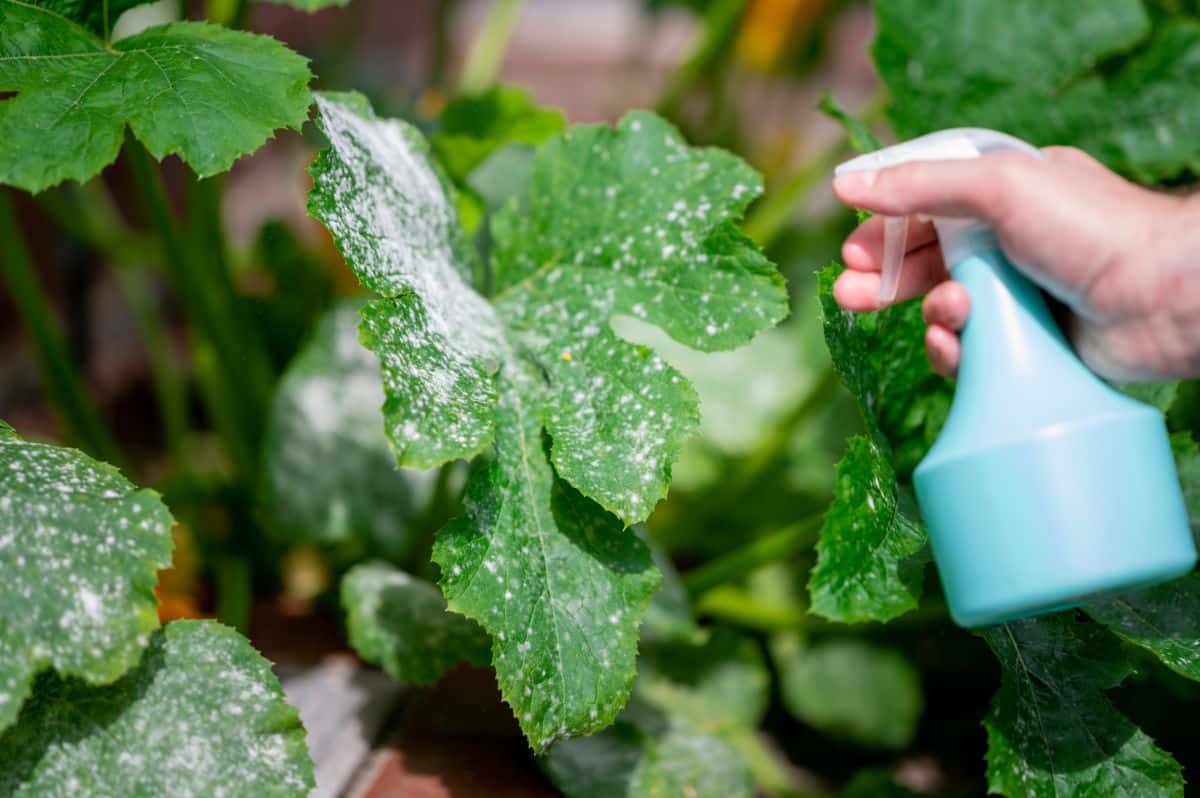
Just as seaweed tea can help prevent damping off, it can also work to keep plants safe from other common fungal issues.
Powdery mildew and downy mildew are two common diseases that are caused by fungi and can weaken plants and diminish your harvest. Applying a foliar spray of seaweed tea to plants that are prone to mildew issues can help keep these diseases from ever becoming a problem in your garden.
Some of the top mildew-prone plants that may benefit from seaweed tea applications include:
- Phlox
- Peonies
- Cucumbers
- Squash
- Pumpkins
- Dahlias
- Mint
- Snapdragons
For best results, apply foliar sprays in the morning or evening when the sun isn’t at its peak. You can also spray your plants on overcast days to avoid potential problems with leaf scorching or spotting.
Tips on harvesting seaweed
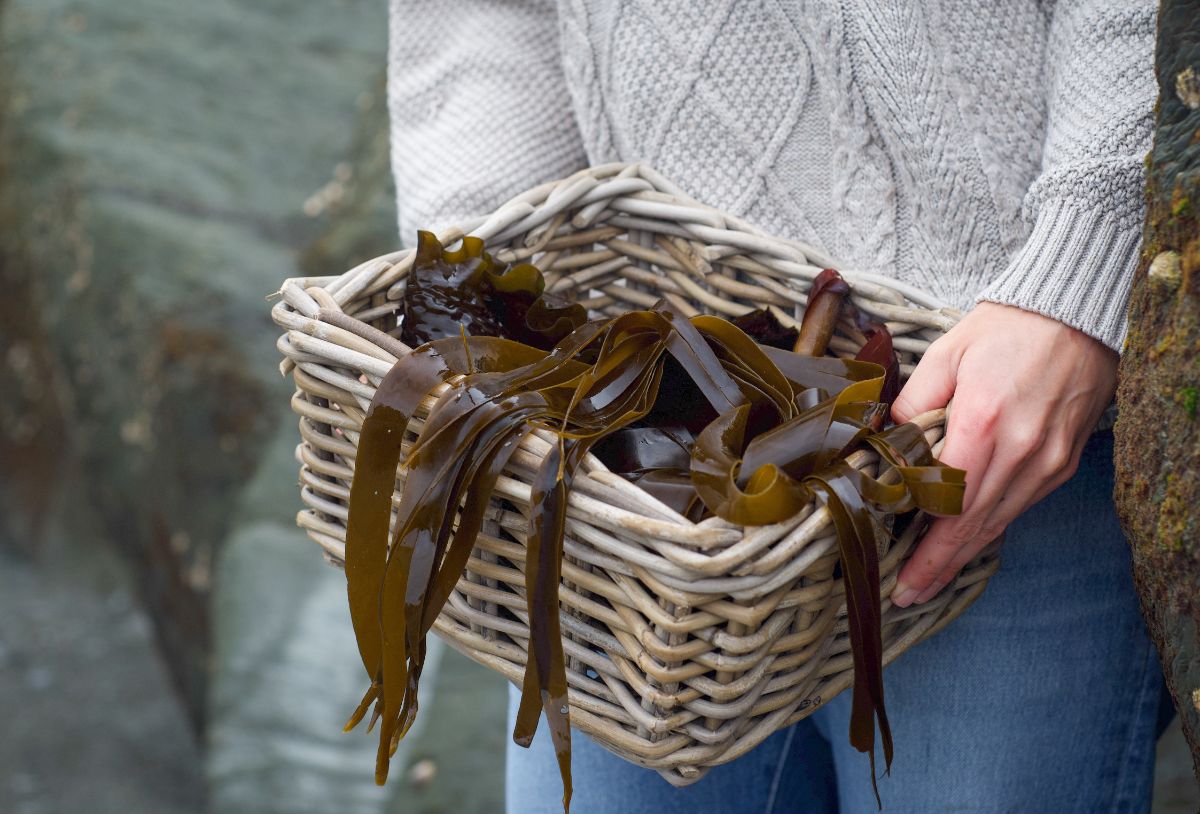
If you live near the coast, you should have plenty of access to fresh seaweed. However, it’s important that you harvest seaweed responsibly. If you want to garden with seaweed, make sure you follow the tips below.
- Only harvest from safe, clean areas.
Chemicals from factories and gas from boats can contaminate local waterways and be absorbed into seaweed. This can be particularly problematic when you bring this contaminated seaweed back to your home garden. To avoid this, only gather seaweed from clean areas with minimal human activity.
- Be sure to follow local guidelines about harvesting.
Your local community may have guidelines and restrictions about gathering seaweed and other beach materials. Take the time to read up on your local laws and regulations regarding seaweed harvest before you start!
- Harvest responsibly.
Seaweed is a part of the natural ecosystem, and it can provide forage and shelter for animals both in the water and on the beach. Overharvesting seaweed can harm local wildlife and upset the natural order of things. For this reason, be sure to only harvest responsibly and never gather more than ⅓ of the seaweed you see in a particular area.
Also, as you work, shake seaweed strands out gently to dislodge any small critters that may be hiding inside!
- Gather seaweed from the middle of the beach.
Seaweed gathered from the mid-beach area is usually drier and easier to carry than seaweed near the water’s edge. Mid-beach seaweed also is less likely to have as many insects and other animals in it.
- Look for smaller and lighter pieces of seaweed.
Thinner and smaller pieces of seaweed will be easier to spread in your garden. Additionally, smaller pieces of seaweed will break down more readily into your soil and compost pile, making nutrients available for plant absorption earlier.
- Choose the right sorts of seaweed.
There are no toxic seaweeds, and all seaweed is edible (though not necessarily palatable). That said, some seaweeds are more commonly used in gardens because they contain higher concentrations of nutrients and minerals. Kelp is one of the most commonly used seaweed varieties by home gardeners, although you can harvest other types of seaweed too.
- Consider rinsing off your seaweed before use.
It’s a matter of debate whether or not you need to rinse seaweed off before you use it. Some gardeners opt to use seaweed as is, and they don’t clean it before adding it to their garden. Other gardeners rinse seaweed with water before placing it in their garden to remove extra salt, sand, and other debris.
The amount of salt that seaweed contains is relatively minimal and is unlikely to cause problems in your garden unless your soil already has a high salinity content. Any extra salt on seaweed will generally wash away when it rains or when you water your garden. But, if you want to be extra careful with added salt, rinsing your seaweed before you use it, it can help.
- Don’t mix fresh, wet seaweed directly into your garden soil.
While it may be tempting to stir your freshly harvested seaweed straight into your garden soil, resist this impulse. When used in this manner, fresh seaweed may actually reduce available nitrogen levels in the surrounding soil. Instead, only place fresh seaweed on the top of your soil line and allow it to break down naturally via the elements and the work of beneficial insects and microbes. Once composted, seaweed can also be mixed directly in your soil as a nutrient-rich soil amendment.
Note: When harvesting seaweed, gather your haul in a 5-gallon bucket or heavy-duty canvas bags. Gathering seaweed in an old wire shopping basket can also be handy, as the wire mesh will allow the seaweed to drain, making it lighter to carry.
Frequently asked questions

You can! Seaweed can be added straight to your garden, although many gardeners choose to prewash it to remove extra salt, sand, and debris. Seaweed can also be mixed into your home compost pile or steeped in water to create a liquid seaweed fertilizer.
Seaweed is full of vital nutrients and trace minerals that plants crave. All plants benefit from seaweed fertilizers, and this multi-purpose product can also be used on houseplants as well as outdoor garden plants.
Some communities may have rules and regulations regarding how to properly harvest seaweed. To be safe, always check with local guidelines before harvesting seaweed or other foraged plant material.
You don’t need to prewash seaweed, but many gardeners do. Applying fresh seaweed to your garden in autumn and allowing it to rest during winter is also a great, hands-free way to reduce salt levels on foraged seaweed without needing to wash it.
Yes! Tomatoes love seaweed, and adding seaweed to your tomato patch can boost plant growth, increase your harvest yield and help your tomato plants naturally resist pests and pathogens.
Yes! Grass and clover lawns can also benefit from the applications of seaweed. Seaweed can be composted prior to application, or you can spray your lawn with a liquid seaweed tea using a garden sprayer.
Summary

Seaweed is a ubiquitous product in coastal areas. While many people overlook it when they visit the beach, if you have a keen gardener’s eye, you’ve probably already suspected that you can make good use of this fantastic, natural product in your garden.
From foliar sprays to rich seaweed compost, there are so many ways to use seaweed in the organic garden. Learning how to garden with seaweed is a good way to attune yourself to your local region and work with the natural products that are readily available to you. This can help make your garden even more eco-friendly, and your plants will reap the benefits from all of the nutrients seaweed contains!
One of the best ways to utilize fresh seaweed in your garden is to compost it first. If you need a refresher on how to create compost at home, check out our easy guide here.


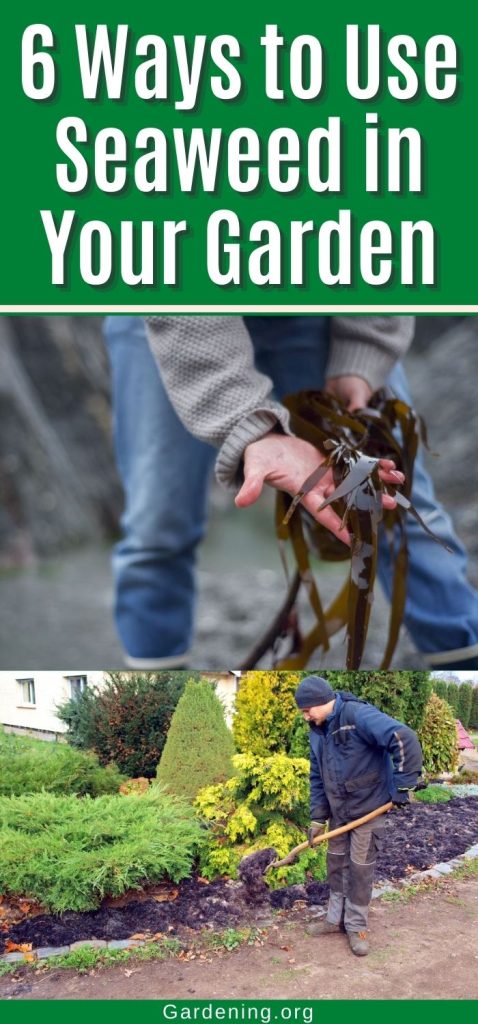
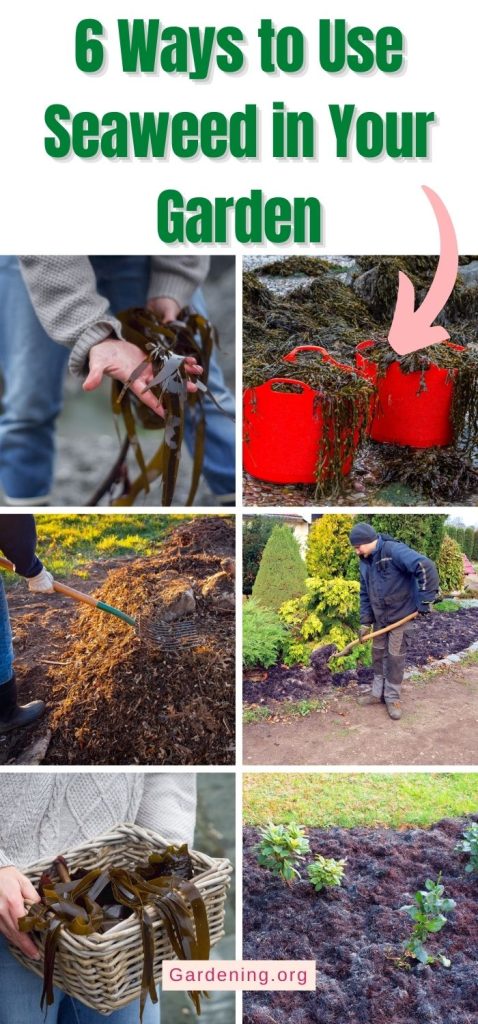

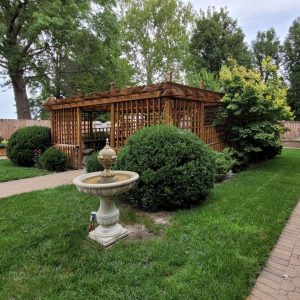
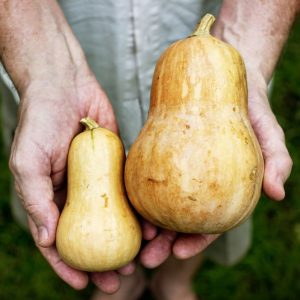
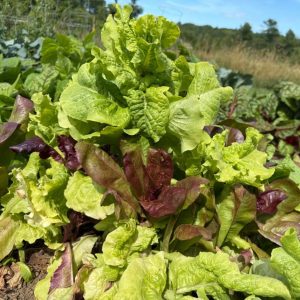
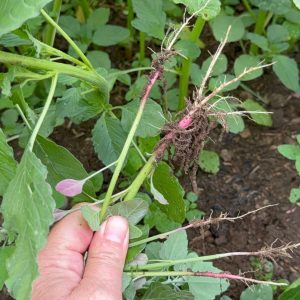
Leave a Reply